Charger ThruNite MCC-4
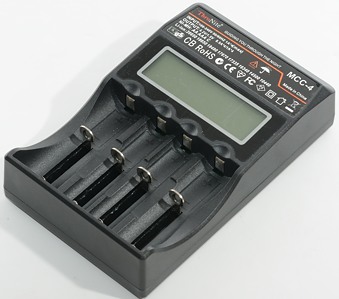
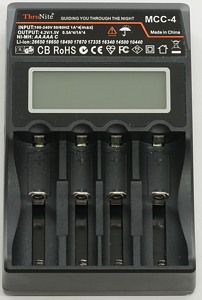

ThruNite is mostly known for flashlights, but now they have also added a charger to their products. This is a universal charger with 4 slots, that can both handle LiIon and NiMH batteries and it has automatic current selection, depending on battery size.
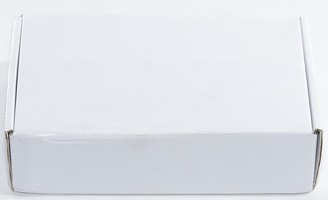
The charger arrived in a white box, this might be because I got one of the first produced.
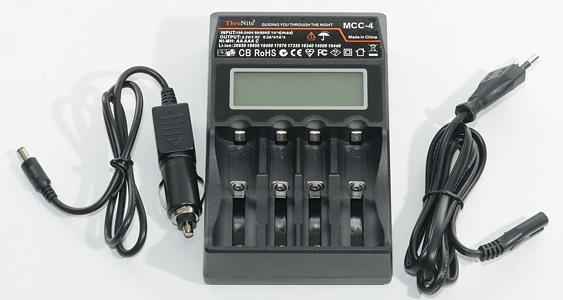
The contents of the box was a bit sparse, there was the charger, a mains cable and a 12 volt car cable, no instruction sheet.
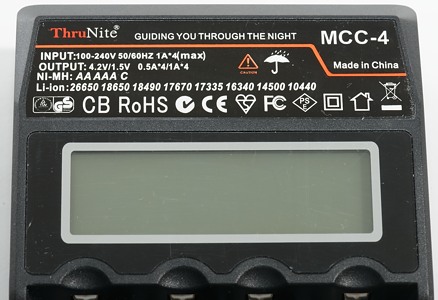
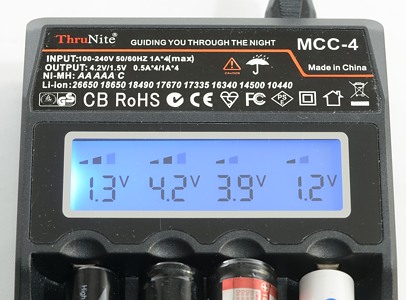
The charger does not use leds, but has a display. It shows the voltage of the battery and a bar with charging status.
When charging one of the status bars is flashing for each battery, when finished all 3. bars are steady. This is not a perfect indication (I would have preferred a large "DONE" indicator), but the final block is large enough to be easily seen.
The voltmeter is not a precision indicator, but gives a rough idea about the voltage on the battery.
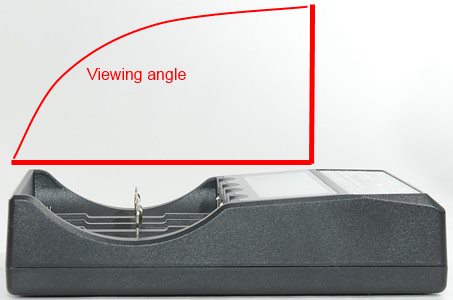
The display has a limited viewing angle.
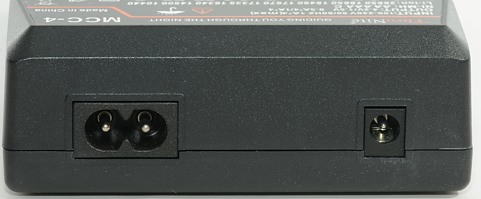
The charger has build in mains supply, i.e. it has a mains connector and a 12 volt connector. The mains input is universal voltage (100-240VAC 50/60Hz).
For the 12 volt input the charger has a converter, i.e. it does not draw 4A when charging 4 batteries at 1A, the current draw is lower.
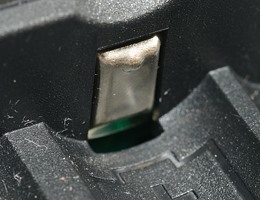
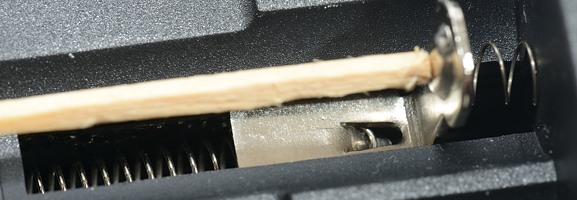
The battery + connection is slightly raised and worked with the flat top batteries I tried. The slider works smooth.
The slider can work with batteries between 30.5 mm and 70 mm.
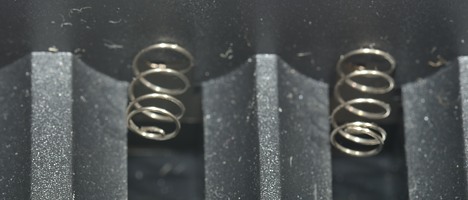
Behind the slider is some extra springs, they are used to select the 1A charge current. When the slider touches the spring, the charger selects 1A current.
This means that batteries from 64mm long and up will be charged with 1A. This is a safe way to select the current, but some shorter batteries that can be charged will take longer to charge than necessary, because they will not activate the 1A current.
That was the theory, in praxis the circuit does not work that perfectly, see below.


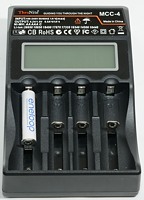
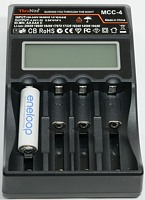
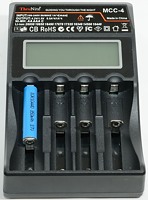
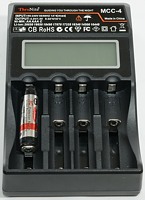
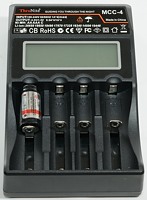
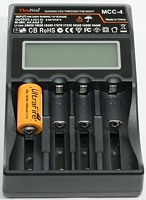
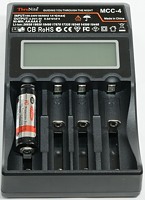

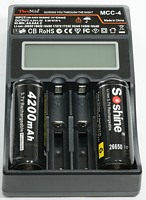
The charger can handle 70 mm long batteries, including flat top cells. (See my 18650 LiIon comparison for length of different brands).
With 26650/26500/C cells there can be a problem, if they have a small button top. None of my C cell would work (A piece of tinfoil can fix this).
Also with 26650/26500/C cells it is only possible to use two bays, the other two must be empty
With 10440 LiIon cells the charge current is too high and I will not recommend charging them in the charger.
Measurements
- Discharge a battery with up to 0.25mA (0.06mAh for NiMH) when not connected to power
- When power is on the current is varying with 0.5mA around 0 for both LiIon and NiMH.
- The voltage readout is only a indication, precision is about 1 on last digit, on NiMH the voltage is measured with current turned off.
- The voltage readout has a maximum value of 4.2 volt, if the battery voltage gets much above that the charger will reset.
- Will not restart charging if battery voltage drops.
- The charge will restart when a battery is inserted or power is cycled.
- Below 0.35 volt the charger is charging with a low pulsing current of a few mA.
- Up to about 2.2 volt is assumes to be NiMH batteries, above that LiIon batteries.
- When charger is powered on with batteries in, it will often start at 1A.
- If the slider touches the spring during battery insertion, it might trigger 1A charge, even with a short battery.
- Because each channel is independent, the different voltages and currents vary between the channels with a small amount.
Test with LiIon cells
.png)
The charger does a CC/CV charge with 1A, but the termination current is a bit to high at 170mA.
.png)
.png)
3400mAh and 2600mAh does also charge fine.
%20%232.png)
%20%233.png)
%20%234.png)
The other slots is the same, except slot 4 has lower termination current (About 130mA, this is better).
.png)
Placing a piece of paper between the sense spring and the slider, makes it possible to charge a large cell at low current. As can be seen this did not work, the charger terminates early. This means that the charger has a limit on the mAh it will fill into a battery, this is a very good safety feature.
For small LiIon cells (i.e. 0.5A charge current) this limit is at about 2200mAh, I did not test it for large cells.
.png)
A battery with capacity below 2200mAh works perfectly with a termination of about 50mA.
.png)
Cheating with the current sense and using 1A to charge the old IMR does also work.
.png)
The charger will use full current when charging four batteries. This time I use a thermo sensor on one of the batteries and as can be seen the battery temperature increases about 20°C.
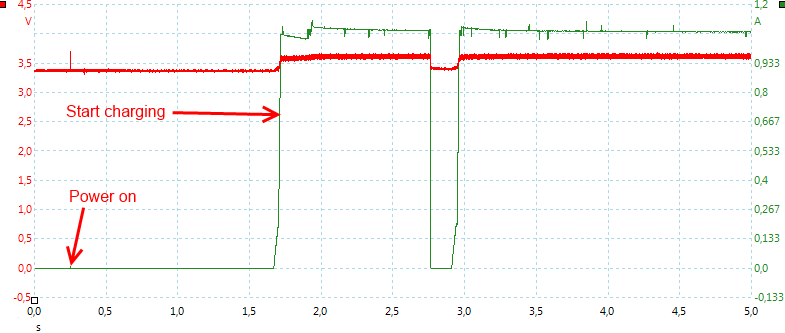
The charger has a fast startup.
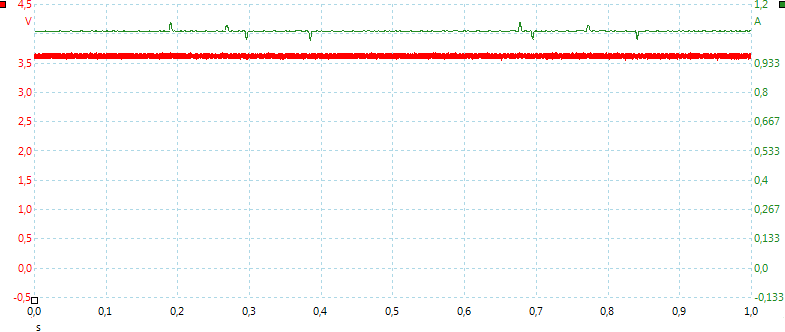
Charging is with regular current, no pulsing.
Test with NiMH cells
.png)
It looks like the charger is using a dv/dt termination for NiMH batteries.
.png)
Because the charger often starts with 1A current when turned on, many of my NiMH test where done at 1A.
.png)
The eneloop-XX takes about 30 minutes more to charge at 1A.
%20%232.png)
%20%233.png)
%20%234.png)
The only channel not starting at 1A at power on was the last one.
.png)
I do not know if all 4 eneloop was charged at 1A, two of them was, the one with the DMM's connected and the one with the temperature probe.
The get fairly hot when charging, about 30°C temperature raise. When testing on my test station the temperature raise was about 6°C.
%2012V.png)
Using the 12 volt input, instead of the main power, did not change it.
.png)
I did one test more, where I was very careful with keeping the charge current down to 0.5A and this time it looks much better with about 20°C temperature rise.
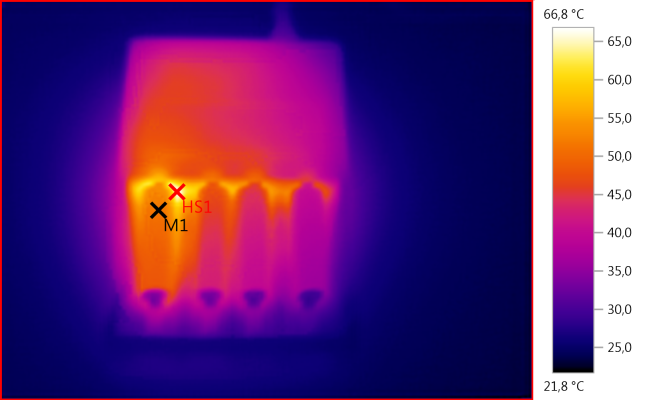
M1: 51.5°C, HS1:66.8°C
Using a thermal imager shows that there is something inside the charger, where close to the batteries, that gets hot. it is usual recommended that batteries are charged at below 40°C to 45°C, on top of that the batteries may produce some heat and increase their own temperature.
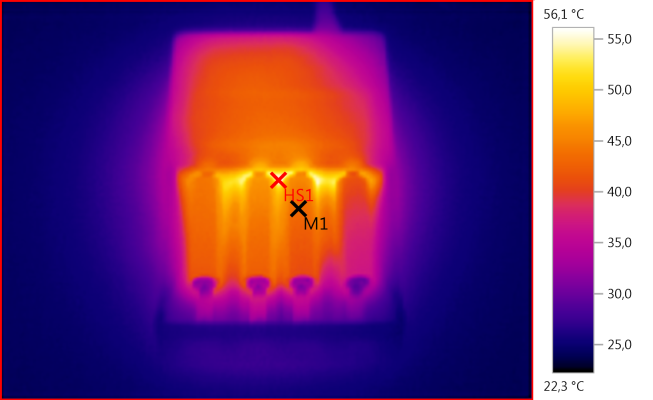
M1: 43.7°C, HS1: 56.1°C
My termoprobe used to records the curves above was placed at the M1 point.
%20charged.png)
It takes about 18 minutes to detect a full battery (At 1A it takes about 6 minutes).
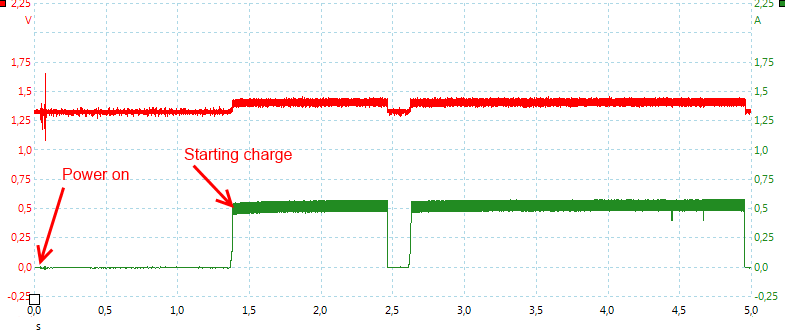
The charger does also start fast with NiMH, no low current to check battery type.
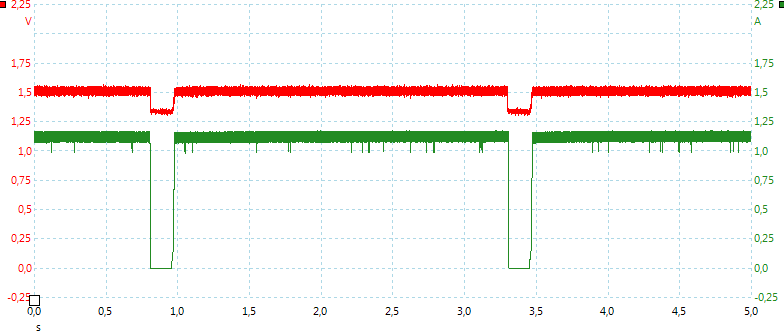
Each 2.5 second the charger stops of 0.17 second to measure the NiMH voltage.
Test with both LiIon and NiMH cells at the same time
.png)
This time it started at 0.5A and it has no problems with a mix of NiMH and LiIon.
.png)
Swapping the LiIon and NiMH do also work as expected. There is more noise in the current, probably because the charger is pulsing the NiMH current.
Testing with 2500 volt and 5000 volt between mains and low volt side, did not show any safety problems.
Conclusion
ThruNite has done a lot of things correct with this charger, it uses CC/CV and dv/dt algorithms to charge, it chargers at the same current with one or four batteries in the charger and it has a fairly good status indicator.
The automatic current selection is good or bad, depending on who you are. You will never forget to select 1A charge current with 18650, but you are forced to use 0.5A with smaller batteries, even if they can take 1A, this means longer charge time for these batteries.
There is one caveat with the charger, be careful when charging short batteries not to trigger 1A charge current. This means always turn the charger on, before putting the batteries in and do not press the slider further back than the battery length!
Except for the caveat above, I will call this charger a good universal charger.
Notes
The charger was supplied by ThruNite for a review.
All tests are done at 230 VAC mains supply, except when otherwise specified.
Here is an explanation on how I did the above charge curves: How do I test a charger























.png)
.png)
.png)
%20%232.png)
%20%233.png)
%20%234.png)
.png)
.png)
.png)
.png)


.png)
.png)
.png)
%20%232.png)
%20%233.png)
%20%234.png)
.png)
%2012V.png)
.png)


%20charged.png)


.png)
.png)